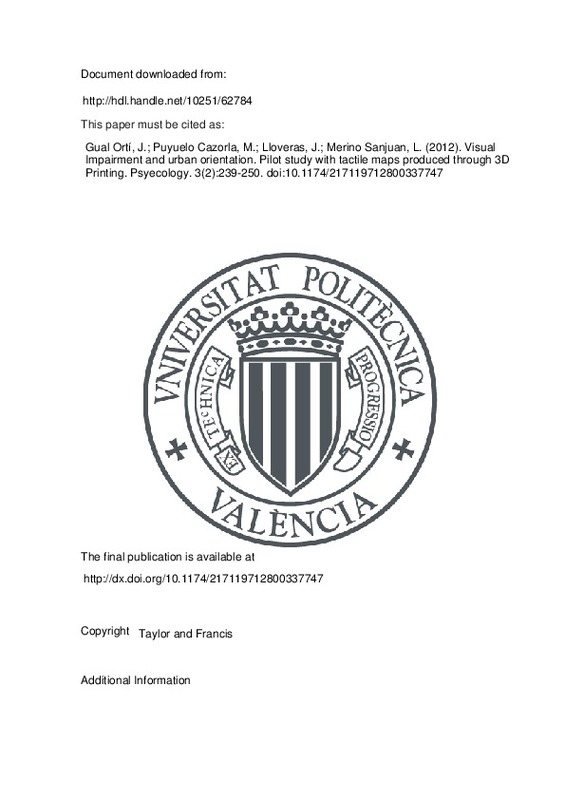JavaScript is disabled for your browser. Some features of this site may not work without it.
Buscar en RiuNet
Listar
Mi cuenta
Estadísticas
Ayuda RiuNet
Admin. UPV
Visual Impairment and urban orientation. Pilot study with tactile maps produced through 3D Printing
Mostrar el registro completo del ítem
Gual Ortí, J.; Puyuelo Cazorla, M.; Lloveras, J.; Merino Sanjuan, L. (2012). Visual Impairment and urban orientation. Pilot study with tactile maps produced through 3D Printing. Psyecology. 3(2):239-250. https://doi.org/10.1174/217119712800337747
Por favor, use este identificador para citar o enlazar este ítem: http://hdl.handle.net/10251/62784
Ficheros en el ítem
Metadatos del ítem
| Título: | Visual Impairment and urban orientation. Pilot study with tactile maps produced through 3D Printing | |
| Otro titulo: |
|
|
| Autor: | Gual Ortí, Jaume Lloveras, Joaquim | |
| Entidad UPV: |
|
|
| Fecha difusión: |
|
|
| Resumen: |
[EN] This article presents a pilot study conducted in Barcelona with blind and visually-impaired people. The aim was to
analyze the use and efficacy of tactile maps produced by means of 3D printing. For this purpose, ...[+]
[ES] El trabajo aquí expuesto presenta un estudio piloto llevado a cabo en Barcelona con personas invidentes y deficientes
visuales. El objetivo del mismo ha sido analizar el uso y la eficacia de los planos táctiles ...[+]
|
|
| Palabras clave: |
|
|
| Derechos de uso: | Reconocimiento - No comercial - Sin obra derivada (by-nc-nd) | |
| Fuente: |
|
|
| DOI: |
|
|
| Editorial: |
|
|
| Versión del editor: | http://dx.doi.org/10.1174/217119712800337747 | |
| Código del Proyecto: |
|
|
| Agradecimientos: |
This research has been funded by the Spanish Ministry of Science and Innovation as part of the National Fundamental Research Programme, the National R&D/Innovation Plan, within the project “Study and design of
orientation ...[+]
|
|
| Tipo: |
|







![[Cerrado]](/themes/UPV/images/candado.png)


